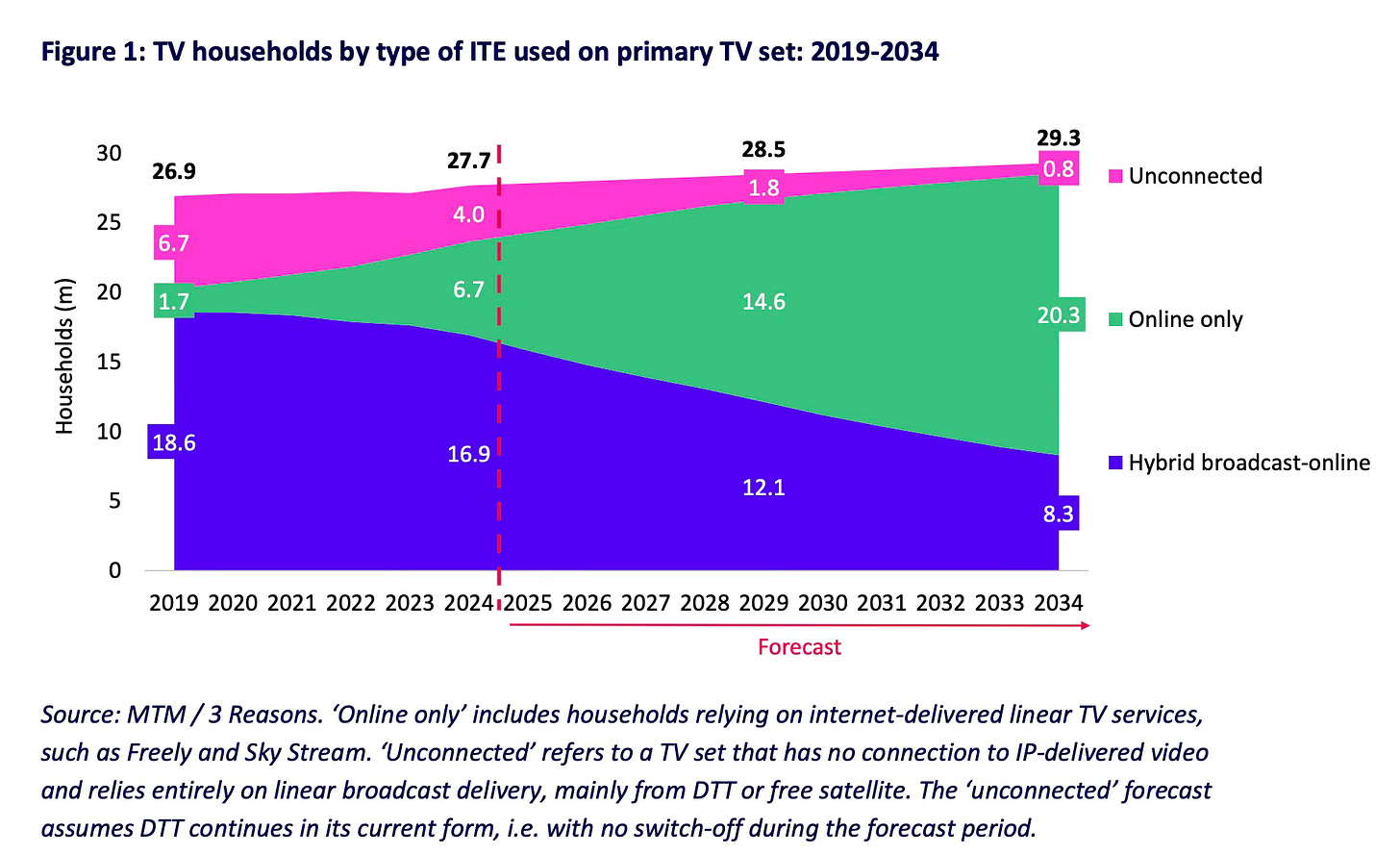The illusion of prominence on CTV
Europe’s new rules aim to make PSBs visible on CTVs, yet discovery still favours whoever pays or performs best.
Streaming Made Easy is funded by direct subscriptions from readers like you. If you enjoy this weekly breakdown, consider becoming a Premium subscriber for longer essays and event perks 🫶
In the linear age, prominence was simple. You owned the slot. Viewers knew the number. Channel 1 meant BBC One, 2 meant France 2, and so on. Choice was limited, not exponential. Discovery was habitual, not algorithmic.
Today, Connected TVs have replaced channel numbers with icons. Interfaces, once neutral program guides, are now advertising real estate. A single homepage layer is worth millions in paid exposure and the remote is a shortcut for global brands.
Across Europe, policymakers are rewriting broadcasting law for the Connected TV era. Their mission is simple: make sure national players aren’t buried under global icons on the home screen.
The UK, France and Germany all passed (or about to pass) “prominence” frameworks to keep public and local services visible on the home screen. Their intent is right. Their timing, overdue. What about their impact? Let’s find out.
Today at a glance:
The policies at play
Putting the policies to the test
The policies at play
Regulators in the UK, Germany and France spent the last few years consulting with the video ecosystem to:
→ grasp the intricacies of the CTV landscape;
→ gather intel and opinions on how prominence works on CTV;
→ ultimately build a legal framework to ensure that public service media stays visible as audiences shift more and more online.
Here’s what they came back with:


